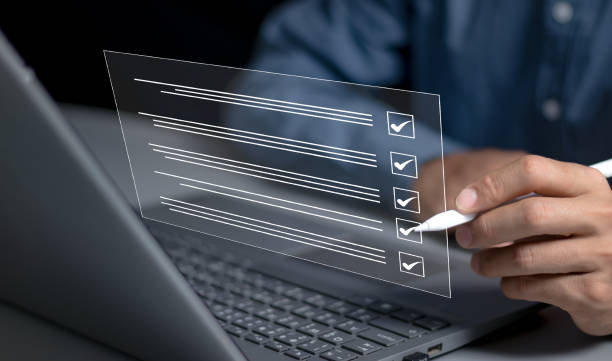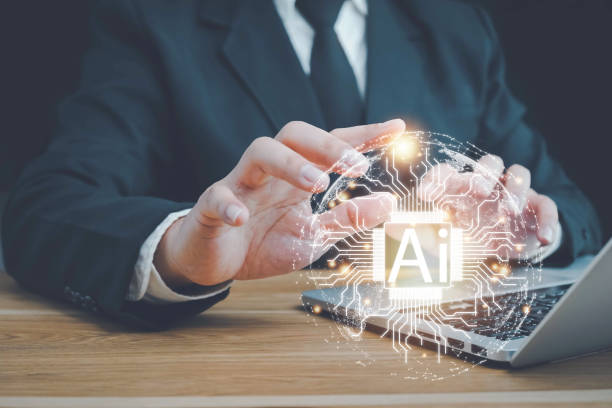`
What is On-Page SEO and Why is it Important?

On-Page SEO is the set of actions taken within a website to improve its ranking in search engines.
These actions include optimizing content, site structure, HTML tags, and other factors related to user experience.
Unlike Off-Page SEO, which focuses on link building and activities outside the site, On-Page SEO gives you complete control over the factors influencing ranking.
The importance of On-Page SEO is that it helps search engines better understand your site’s content and display it to relevant users.
With careful On-Page SEO optimization, you can attract more organic traffic and increase your conversion rate.
In fact, without a strong On-Page SEO strategy, your Off-Page SEO efforts will not yield the desired results.
Imagine you have a store that offers the best products, but its storefront is dirty and disorganized.
On-Page SEO acts like an attractive storefront that draws customers into your store.
For better understanding, choose the right #keywords, produce quality content, and make sure your site is optimized for users and search engines.
Ultimately, On-Page SEO is a long-term investment that brings lasting and valuable results to your business.
This process requires careful analysis, strategic planning, and continuous execution to stay ahead of the competition.
Does your current website create the trust that potential customers should have in your business? If the answer is no, it’s time to have a professional and impactful corporate website with Rasaweb.
✅ Completely custom design tailored to your brand identity
✅ Increase lead generation and the credibility of your business in the eyes of customers⚡ Contact us for free consultation!
Keyword Research: The Foundation of On-Page SEO

Keyword research is the first and most important step in an On-Page SEO strategy.
Choosing the right keywords helps you create content that precisely meets users’ needs and ranks higher in search results.
There are several tools like Ahrefs, Moz Keyword Explorer, and Ubersuggest that you can use to find keywords relevant to your business.
When researching keywords, pay attention to search volume, keyword difficulty, and the keyword’s relevance to your content.
Long-tail keywords, which are longer and more specific phrases, usually have less competition and can attract more targeted traffic to your site.
For example, instead of the keyword “shoes,” use the phrase “buy men’s running shoes.”
After identifying the appropriate keywords, use them naturally in your titles, meta descriptions, body content, and HTML tags.
This helps search engines understand the main topic of your content and display it to relevant users.
Remember that On-Page SEO will be incomplete without accurate and targeted keyword research.
Using keywords correctly is the foundation for success in attracting organic traffic and improving your site’s ranking.
Content Optimization: The Reign of Quality
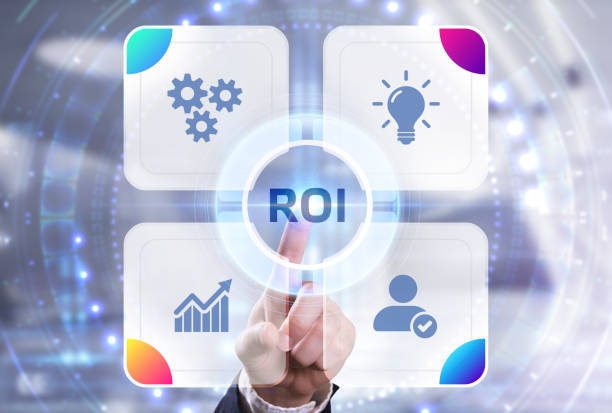
Content is king of On-Page SEO.
High-quality, valuable, and unique content not only attracts users but also keeps them on your site longer and increases the likelihood of their return.
Search engines also place great importance on high-quality content, and sites that provide valuable content rank higher.
When producing content, pay attention to the following:
- Provide complete and accurate information: Your content should answer users’ questions and meet their needs.
- Use keywords: Use keywords naturally and purposefully in titles, subtitles, and body content.
- Readability: Divide your content into short, readable paragraphs and use images, videos, and other visuals to make it more engaging.
- Uniqueness: Avoid copying content from others and try to produce original and unique content.
On-Page SEO is not possible without high-quality content.
High-quality content not only improves your site’s ranking in search engines but also increases the credibility and trust of users in your business.
Producing valuable and targeted content is a long-term investment that brings lasting and valuable results to you.
| Feature | Description |
|---|---|
| Attractive Titles | Use attractive titles related to keywords |
| Organized Subtitles | Divide content into different sections with clear subtitles |
| Images and Videos | Use relevant images and videos to make content more engaging |
| High Readability | Use a suitable font and short paragraphs |
Optimizing Titles and Meta Descriptions
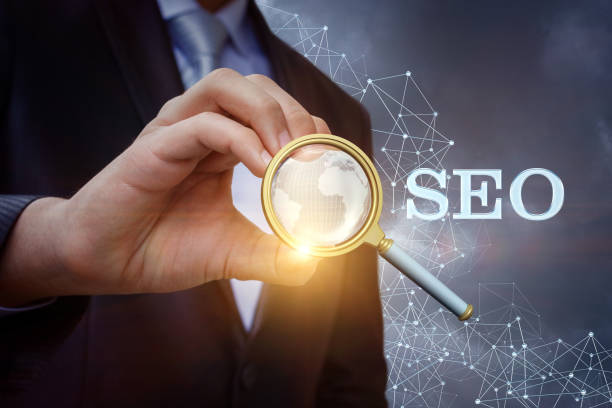
Titles and meta descriptions are two important elements in On-Page SEO that play a key role in attracting users from search engine results pages (SERP).
Titles are HTML tags that specify the main title of the page and are displayed at the top of the browser and in search engine results pages.
Meta descriptions are short descriptions that summarize the content of the page and are displayed below the title in search engine results pages.
To optimize titles and meta descriptions, pay attention to the following:
- Use keywords: Use your main keywords in the title and meta description.
- Be attractive: The title and meta description should be attractive and engaging to encourage users to click.
- Be unique: Each page should have a unique title and meta description.
- Appropriate length: The title length should be between 50 and 60 characters and the meta description length should be between 150 and 160 characters.
By carefully optimizing titles and meta descriptions, you can increase your click-through rate (CTR) and attract more traffic to your site.
These two elements are the first thing users see in search engine results pages, so you should do your best to make them attractive and relevant.
Remember that On-Page SEO includes paying attention to small but important details such as titles and meta descriptions.
Are you dissatisfied with the low conversion rate of visitors to customers on your online store?
Solve this problem forever with professional online store design by Rasaweb!
✅ Significant increase in visitor-to-customer conversion rate
✅ Create a great user experience and gain customer trust
⚡ Get free consultation
Image Optimization: Beyond Beauty

Images play an important role in the visual appeal and user experience of your site, but they can also be effective in On-Page SEO.
By optimizing images, you can improve your site’s ranking in Google image search results and attract more traffic to your site.
To optimize images, pay attention to the following:
- File name: Name image files with relevant keywords.
For example, instead of the name “IMG_1234.jpg,” use the name “buy-men’s-sports-shoes.jpg.” - Alt Text: Fill in the alt text of the images with accurate and relevant descriptions.
Alt text helps search engines understand the content of the image and is displayed to users if the image does not display. - File size: Optimize the file size of the images so that the loading speed of your site does not decrease.
Use image compression tools to reduce file sizes. - File format: Use appropriate formats such as JPEG for images with many colors and PNG for images with many details.
By optimizing images, you can improve your site’s On-Page SEO and attract more traffic through Google image search.
Optimized images not only help improve your site’s ranking but also provide a better user experience.
URL Structure: Easy Navigation
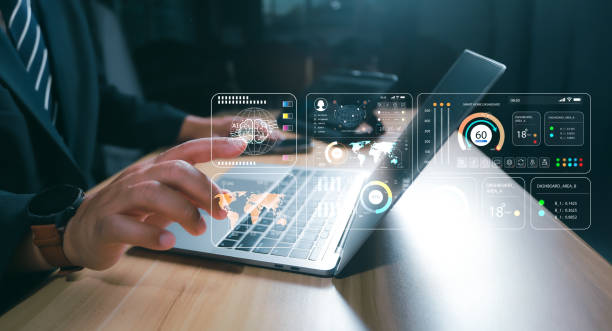
URL structure is another important factor in On-Page SEO that helps search engines and users better understand the content of your site pages.
A suitable URL structure should be simple, readable, and relevant to the content of the page.
To optimize the URL structure, pay attention to the following:
- Shortness: URLs should be as short as possible.
- Use of keywords: Use your main keywords in the URL.
- Use of hyphens: Use hyphens (-) instead of spaces (_) to separate words in the URL.
- Avoid extra parameters: Avoid using extra parameters in the URL.
A suitable URL structure not only helps improve your site’s On-Page SEO but also provides a better user experience.
Users can easily guess the content of the page and trust it by seeing a readable and relevant URL.
On-Page SEO requires attention to small and large details that together improve your site’s ranking.
Site Speed: Patience is Not Golden
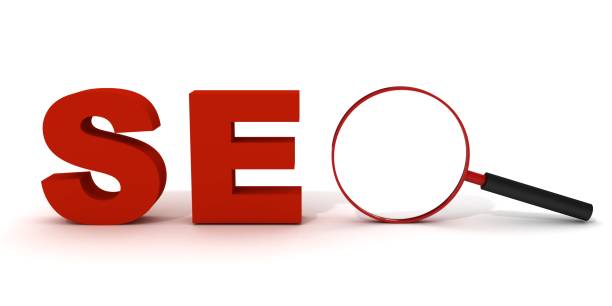
Site speed is a very important factor in On-Page SEO and user experience.
Users expect your site pages to load in a few seconds, and if your site is slow, the likelihood of users leaving it is very high.
Search engines also place great importance on site speed, and sites with faster speeds rank better.
To improve site speed, pay attention to the following:
- Image optimization: Large and unoptimized images can slow down your site.
- Use of Cache: By using cache, you can store the content of your site in users’ browsers so that it loads faster on subsequent visits.
- Reduce the number of HTTP requests: The fewer HTTP requests, the faster your site loads.
- Use of CDN: Using a Content Delivery Network (CDN) can help improve your site’s speed around the world.
By improving site speed, you can provide a better user experience, reduce your bounce rate, and improve your site’s ranking in search engines.
On-Page SEO also includes technical optimization of the site, and speed is one of the most important technical factors.
You can use Google PageSpeed Insights to measure your site speed.
| Factor | Impact on Speed | Solution |
|---|---|---|
| Large Images | Decreased loading speed | Optimize and compress images |
| Lack of Cache | Reloading content on each visit | Enable Cache in server settings |
| High Number of HTTP Requests | Increased loading time | Merge CSS and JavaScript files |
| Lack of CDN | Low speed for users in remote areas | Use CDN to distribute content |
Mobile Optimization: The Small World in Your Hands

Mobile optimization is a vital factor in On-Page SEO.
Today, most users access the Internet through mobile devices, and search engines also prioritize sites that are optimized for mobile.
To optimize your site for mobile, pay attention to the following:
- Responsive Design: Use responsive design so that your site automatically adapts to the screen size of different devices.
- Loading speed: The loading speed of your site on mobile devices should be high.
- User experience: The user experience of your site on mobile devices should be simple and enjoyable.
- Font size: The font size should be large enough for users to easily read the content of your site on mobile devices.
By optimizing your site for mobile, you can provide a better user experience for mobile users, reduce your bounce rate, and improve your site’s ranking in search engines.
On-Page SEO includes paying attention to the needs of users on different devices, and mobile optimization is one of its most important aspects.
Is your current online store design causing you to lose customers and sales?
Rasaweb is your solution with the design of modern and user-friendly online store sites!
✅ Dramatic increase in conversion rate and sales
✅ Create strong branding and gain customer trust
⚡ Get a free online store design consultation from Rasaweb!
Internal Linking: Effective Page Communication

Internal linking refers to creating links between different pages of your site.
Internal linking helps search engines better understand the structure of your site and recognize the importance of different pages.
Also, internal linking helps users easily navigate your site and discover more content.
For effective internal linking, pay attention to the following:
- Relevance: Links should point to pages related to the content of the linking page.
- Anchor Text: Use descriptive link text related to keywords.
- Number of links: Avoid creating too many links on one page.
- Variety: Make sure to link to different pages of your site.
With effective internal linking, you can improve your site’s On-Page SEO, provide a better user experience, and improve your site’s ranking in search engines.
On-Page SEO includes creating a strong communication network between different pages of your site, and internal linking is a powerful tool to achieve this goal.
Using internal links correctly is considered a strategic method for On-Page SEO.
Schema Markup: A Common Language with Search Engines

Schema Markup is a markup code that helps search engines better understand the content of your site.
By using Schema Markup, you can provide additional information about your content, such as content type, author, publication date, etc.
This additional information helps search engines properly categorize your content and display it to relevant users in search results.
There are different types of Schema Markup that you can use for different types of content, such as articles, products, events, reviews, etc.
To use Schema Markup, you need to add the relevant code to the HTML of your pages.
By using Schema Markup, you can improve your site’s On-Page SEO, increase your click-through rate, and attract more traffic to your site.
On-Page SEO includes using tools that help search engines better understand the content of your site, and Schema Markup is one of these tools.
On-Page SEO is a process that helps improve the visibility of the site in search results.
On-Page SEO, by focusing on optimizing internal elements of the site, helps search engines better understand the content of the site.
Optimizing #HTML_codes and site structure is a fundamental part of On-Page SEO.
On-Page SEO is a long-term strategy that requires patience and follow-up.
By doing On-Page SEO correctly, you can improve your site’s ranking in search results and attract more traffic.
The main goal of On-Page SEO is to create a better user experience and attract satisfied visitors.
To understand more about On-Page SEO, you can use various online resources.
Frequently Asked Questions
| Question | Answer |
|---|---|
| What is On-page SEO? | On-page SEO refers to the set of actions that are performed inside your website to improve its ranking in search engine results. This includes optimizing content, site structure, and HTML code. |
| Why is on-page SEO important? | On-page SEO helps search engines understand the content of your page and determine whether your content is relevant to searchers or not. This is the foundation of any successful SEO strategy. |
| What are the key elements of on-page SEO? | Page Title (Title Tag), Meta Description, Keyword Usage, Image Optimization, Heading Structure (H1, H2, …), Internal Linking, and Content Quality are key elements. |
| How do I optimize the page title (Title Tag)? | The page title should include the main keyword, be attractive and enticing to click, and be between 50 and 60 characters (or suitable pixels) to be fully displayed in search results. |
| What role does Meta Description play in on-page SEO? | The meta description is a summary of the page content that is displayed below the title in search results. Although it does not directly affect rankings, it helps SEO by increasing the click-through rate (CTR). |
| What is the importance of using the heading structure (H1, H2, H3) in on-page SEO? | Headings structure the page content and make it easier to read. H1 is usually the main title of the page and should include a keyword. H2 and H3 are used to organize subsections and help search engines understand the hierarchy of content. |
| How to use keywords effectively in content? | Keywords should be used naturally and logically throughout the content, including the introduction, body and conclusion. Avoid keyword stuffing. |
| What steps are involved in optimizing images for on-page SEO? | It involves compressing images to reduce the volume, using descriptive file names, adding appropriate Alt Text, and optimizing the title and description of the image. Alt Text is essential for accessibility and helps search engines understand the content of the image. |
| What is Internal Linking and what are its benefits? | Internal linking means creating a link from one page on your website to another page on the same website. This helps users easily navigate your site, distributes page authority throughout the site, and helps search engines better understand your site structure. |
| What is the importance of content quality in on-page SEO? | Quality, accurate, comprehensive and valuable content for users is the cornerstone of on-page SEO. Search engines prefer content that meets the needs of users. Quality content leads to more user time on the site (Dwell Time) and a lower Bounce Rate, which are positive SEO signals. |
And other services of Rasa Web Advertising Agency in the field of advertising
Smart Link Building: Revolutionize SEO ranking improvement with the help of using real data.
Smart Link Building: An innovative platform for improving digital branding by managing Google Ads.
Smart Custom Software: A professional solution for online growth with a focus on marketing automation.
Smart Marketing Automation: Transform customer acquisition with the help of SEO-oriented content strategy.
Smart Link Building: A combination of creativity and technology to increase click-through rate through dedicated programming.
And over hundreds of other services in the field of internet advertising, advertising consulting and organizational solutions
Internet Advertising | Advertising Strategy | Advertorial
Resources
SEO article in Hubspot
,Internal Optimization in Moz
,On-Page SEO Training in Ahrefs
,SEO Guide in Search Engine Land
? Are you looking for transformation and sustainable growth in your online business? Rasaweb Afrin paves your way to success by providing comprehensive digital marketing solutions including secure website design, SEO, and social media management. Trust us to make your brand shine in the digital space and achieve your goals.
📍 Tehran, Mirdamad Street, next to the Central Bank, South Kazerun Alley, Ramin Alley No. 6
`


